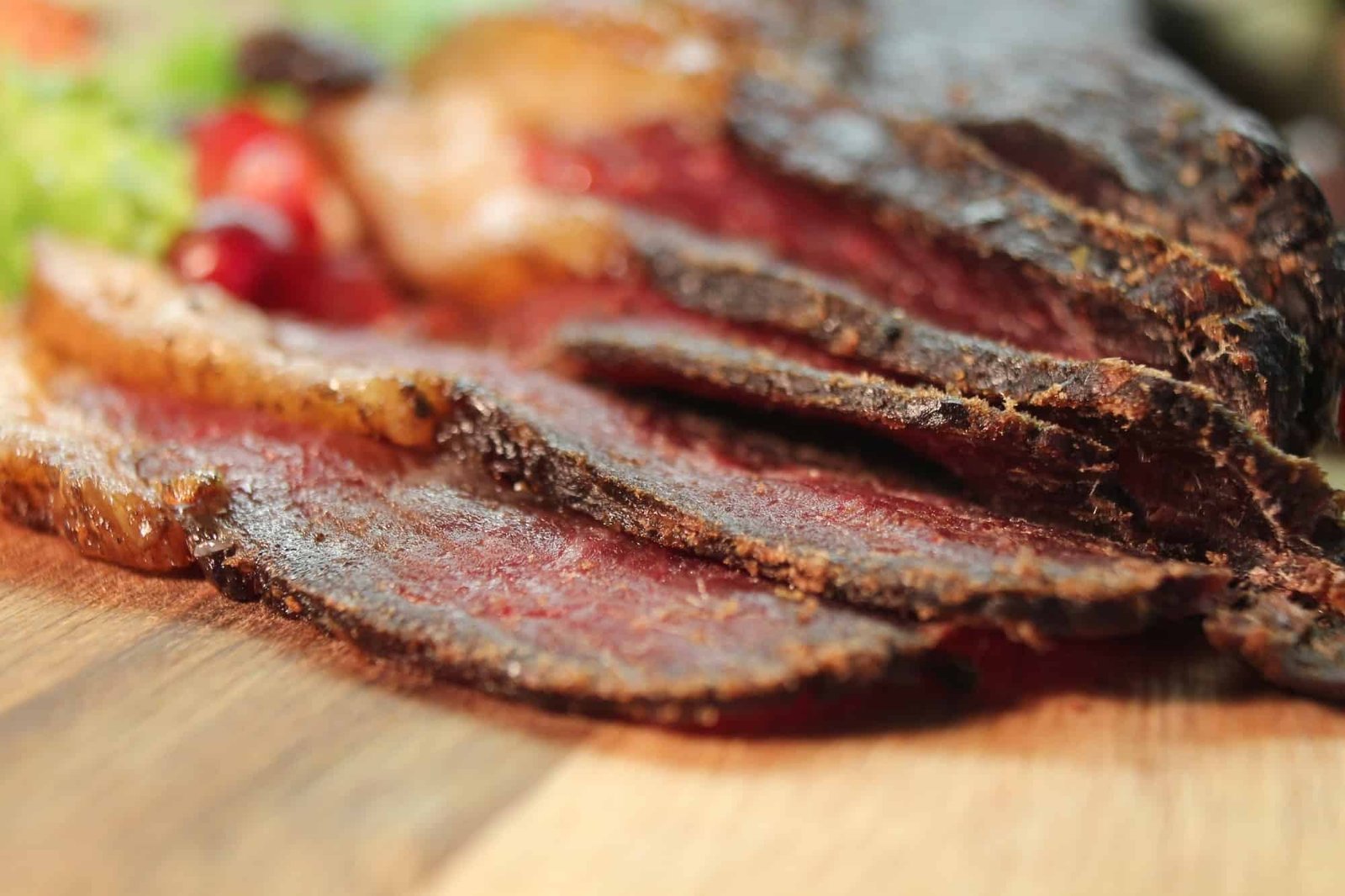Ever bit into a piece of jerky and thought, hmm, this doesn’t taste good? Probably not.
The meat’s flavor comes through even if the spices aren’t stepping up. But when you bite into a piece of jerky that’s both flavorful meat wise and spiced to perfection, it’s almost worth paying the price of store-bought jerky.
Almost. You know what’s cheaper and healthier than those bags of $6 jerky? Making your own. These dehydrator jerky recipes will show you all the ropes.
Recipe 1: Sweet Soy
Yes, it’s true. This recipe from TheStreet calls for coca cola. Learn why below.
Your first step is to buy the right kind of meat. Then you want to stick the meat in the freezer for about an hour, while you make the marinade.
You don’t want it to freeze through, but you want it to have some structure for slicing.
For this recipe you’ll need:
- 2/3 cup light soy or soy aminos
- 1/4 cup cola (coke)
- 1/4 cup cider vinegar
- 1/4 cup Worcestershire sauce
- 2 tablespoons red pepper flakes
- 1 teaspoon garlic powder
- 1/2 teaspoon smoked paprika
Combine everything in the bowl and throw your cut meat strips in. Let it soak for as long as you have – at least 3 or 4 hours.
Follow the instructions that came with your dehydrator to cook them.
#2 Chili Lime Brine Marinade
Want something a little spicy but not too hot for the kids? This is a flavorful marinade anyone can make – though you will need fire cider.
You’ll need:
- 1/2 cup strong kombucha
- 1/2 cup rosemary infused white balsamic vinegar
- 1/2 cup fire cider vinegar
- 2 tablespoons maple syrup
- 1 teaspoon grated lime zest
- 2 crushed garlic cloves
- 1 teaspoon chili powder
- 1/2 teaspoon salt (smoked salt, if you have it)
Follow the same instructions as above, with the freezing of the meat and the longer marinade. Dehydrate the marinated pieces for the proper amount of time and enjoy!
#3 Java Jerky
Want something with a different kind of kick – like the coffee kind? This sweet but java flavored jerky is delicious and an out-of-the-box treat.
For it, you’ll need
- 1 cup coffee
- 1 cup cola
- 1/2 cup soy sauce
- 1/2 cup dark brown sugar
- 1/4 cup Worcestershire sauce
- 2 tablespoons Morton tender quick
- 2 teaspoons cayenne pepper
- 2 teaspoons black pepper
Combine all the ingredients and marinate – save for the black pepper. Don’t add that to the meat until you’re putting it on the dehydrator trays.
Then, let it dry and enjoy!
Storing Your Dehydrator Jerky Recipes
Once you’ve tried out these recipes and found a favorite, you need to know how to store them. Store bought bags use preservatives and other unnatural ingredients.
You, however, can just use a marshmallow. That’s right – just like brown sugar, a marshmallow will absorb any extra humidity.
There’s your dehydrator jerky recipes problem, solved. Let us know how it goes!
Wanna try out some more recipes with your dehydrator? Click here.

